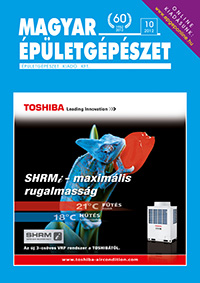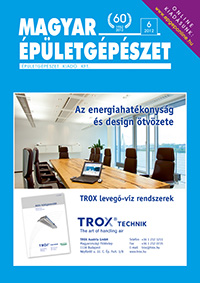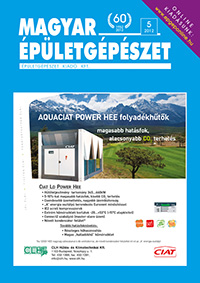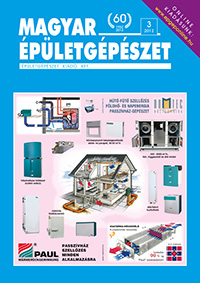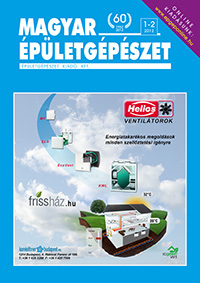Lapszámok
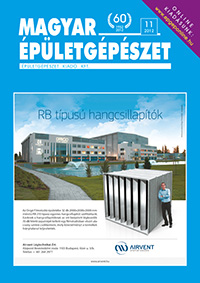
2012 11. szám
- Dr. Szalay Zsuzsa:
Megéri-e közel nulla energiaigényű épületeket építeni? - Dr. Kalmár Ferenc PhD:
XVIII. Épületgépészeti, Gépészeti és Építőipari Szakmai Napok Nemzetközi Konferencia és Kiállítás - Fülöp Orsolya - Severnyák Krisztina:
Épületek energetikai követelményeinek költségoptimalizált szintjét megalapozó számítások - Kurnitski, Jarek:
Revision of REHVA nZEB technical definition for nearly zero energy buildings - Prof. Seppänen, Olli:
Interjú Paul Hodsonnal az Európai Bizottságtól - Erdős Attila:
Solar Decathlon Europe 2012 – Beszámoló a versenyről - Siemens Zrt.:
Családi házakban és lakásokban is elérhetőek az ODOO otthonautomatizálási megoldásai - Grundfos South East Europe Kft.:
Grundfos MAGNA3 – az új keringető szivattyú - Rébay Lajos:
Tanulságos életpályák – Móczár Gábor - Kompozitor Kft.:
FuranFlex® kéménybélelés-rendszer - Ing. Kurčová, Mária:
A fűtőtestek cseréje meglévő fűtőrendszerekben - Dr. Barna Lajos PhD:
Uponor oktatóközpont nyílt
Hozzászólások
Revision of REHVA nZEB technical definition for nearly zero energy buildings
Még nem érkezett hozzászólás!
Kurnitski, Jarek
Revision of REHVA nZEB technical definition for nearly zero energy buildings
A REHVA, az Európai Épületgépészeti Egyesületek Szövetsége október 18-án nagyon érdekes és tartalmas szemináriumot rendezett Brüsszelben, amelynek témája az épületekre és épületgépészeti termékekre vonatkozó EU szabályozás volt. A szeminárium egyik központi témája a közel zéró energiaigényű épületek kérdése volt, amelyről Jarek Kurnitski professzor tartott előadást. Beszámolt arról a szakmai munkáról, amelynek keretében a REHVA átdolgozza és várhatóan 2013 februárjában közreadja a közel zéró energiaigényű épület definícióját. Mivel a téma nálunk is az érdeklődés középpontjában áll, felkértem a professzort, hogy előadása alapján készítsen cikket lapunk számára. Annál is inkább fontosnak tartom a professzor és gondolatainak bemutatását, hiszen november 30-án a Magyar Épületgépészek Napja keretében sorra kerülő nemzetközi konferencia egyik meghívott külföldi előadója lesz. Hasonló témában tart majd előadást, de ígérete szerint ott több műszaki megállapítást hallunk majd tőle.
EPBD recast (2010/31/EU) launched nearly zero energy (nZEB) target in 2010 with the need for the Member States to define what nZEB for them exactly constitutes. REHVA, the Federation of European Heating, Ventilation and Airconditioning Associations, realized the problem that various definition of nZEB may cause in Europe and established a task force to prepare technical definitions and system boundaries for energy performance calculation. These were prepared in the level of detail to be suitable for the implementation in national building codes. Outcome of the REHVA nZEB Task Force published in May 2011 formed a REHVA proposal for uniformed national implementation of EPBD recast in national building codes.
REHVA nZEB Task Force utilized CEN EPBD standards, but as these standards were published 2007/2008, i.e. before EPBD recast, they do not include nZEB and have some limitations in the system boundary definitions.
EN 15603:2008, the major standard dealing with energy performance ratings and definitions, has the system boundary definition with national decision options – which depending on the choice, may lead to conflict with EPBD recast for on-site renewable energy utilization.
In this situation, REHVA nZEB definition/energy calculation system boundaries launched in May 2011 was the only methodology available, and was widely utilized and affected the preparation of national definitions, codes and calculationmethods inmany countries. REHVA definition has been popular: at the time the revision was decided in April 2012 it was viewed 1070 times and was downloaded 409 times.

